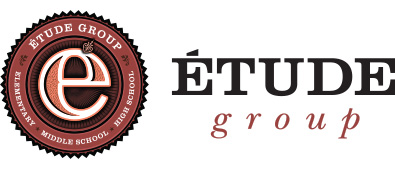How did Ryan White change the world? How did mummification aid in the fall of civilizations (through the eyes of Anubis)? What was the reason the old kingdom of Egypt fell? How do miles and distance relate to real life? How did ancient Greece fall (from the perspective of a slave child)? How do families show emotions in similar ways (presented in both English and Spanish)? These are the driving questions that each student will answer in their Storytelling project this trimester.
During the first six weeks of the trimester students focus on learning and developing the skills and concepts of storytelling. In effort to create context for these skills, students select an area of focus for the project within the first few weeks of the trimester even though production of the project doesn’t formally begin until they are six weeks into the class.
Selecting a meaningful project topic isn’t always easy for middle school students. Colleen creates project menus based on what students are studying in academic classes as a starting point. This trimester’s project options included:
- Language arts: Create and perform a story from the perspective of the person you have chosen to study, focus on what you have learned about how that person changed the world
- Social studies: Create and perform a story from the perspective of someone (a person, a creature, a spiritual figure) who lived in one of the ancient civilizations you are studying, focus on what you have learned about why civilizations succeed or fail
- Spanish: Create and perform two versions (Spanish and English) of a story that focuses on family issues, focus on the “family” vocabulary you are studying
- Science: Create and perform a story from the perspective of a subatomic particles, focus on what you have learned about electricity, magnetism, or thermal energy and suggest how humans could better use and conserve energy
- Create your own idea: Modify one of the above ideas
Colleen provides scaffolding for the projects in an Interactive Portfolio to ensure students have the tools to develop their thoughts and their project, and a way to document their thinking. Gateways and conferencing are used in the seminar to ensure students are progressing and learning time and project management skills.
The projects at The Mosaic School focus on communication and must have creative intention and a driving question. During Exhibitions of Learning (EoLs) students in Colleen’s drama seminar will communicate their idea(s) through the art form of storytelling. In the telling of their story students must demonstrate key storytelling standards they learned during the first half of the seminar, including:
- A meaningful message that allows the audience to connect to the story
- Creative/Effective physical and vocal technique, including character-work
- Creative/Effective use of language
Each time a seminar is offered it evolves and changes, allowing students to take the seminar more than once. Students that are taking a class for the first time learn basic skills, while those that have taken it before deepen their understanding and work on advanced skills. Flexibility within the seminar classrooms makes space for student voice and choice, keeping students excited about learning and engaged in the classroom.
In the weeks ahead look for additional posts in this multi-part series on Storytelling. Next week will focus on the Art of Storytelling, the core standards and essential questions.

